The History of Tibetan Medicine
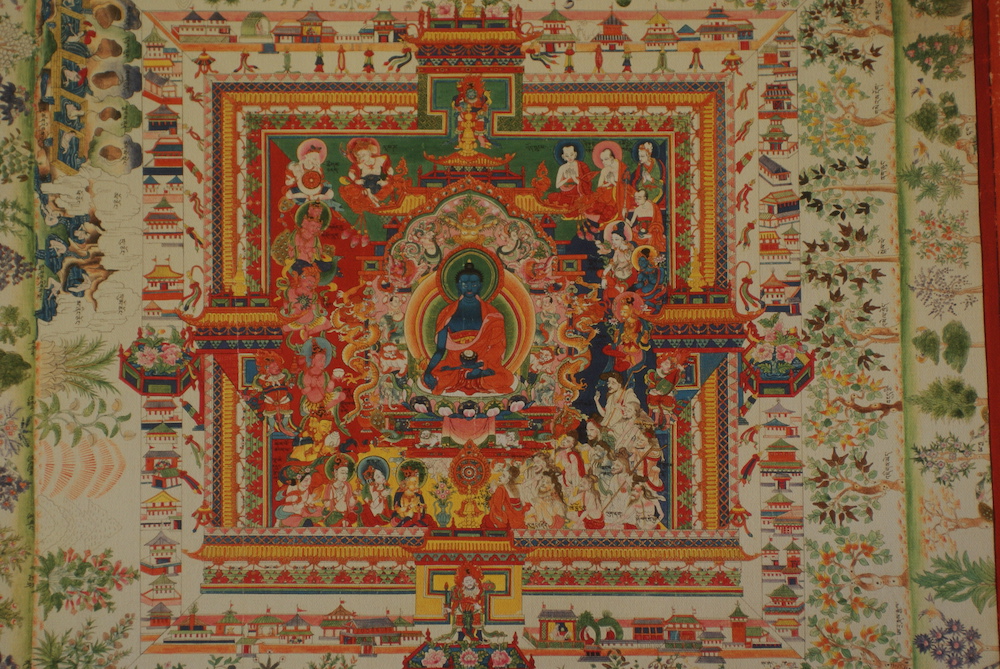
The Tibetan system of medicine has a long and honored history. Our forefathers have met the challenge of combating diseases by developing a medical system, which is of an equal standing with all the traditional systems of medicine. It is one of the oldest medical traditions which still enjoy an unbroken lineage of practice. There are a number of medical systems in the world, which are categorized as traditional, like a few, the Indian Ayurveda system, the Siddha, the Chinese, the Native American, the African, the Greek with which the Tibetan system, apparently, has a close relation. Although they have differences among them in terms of practice, due to diverse social and religious environment, they share many similarities.
Primitive inhabitants of Tibet, like other ancient people throughout the world, devised their own natural remedies. Applying residual barley from Chang (Tibetan beer made from barley) on swollen muscles or parts, drinking hot water in case of indigestion and using molten butter to stop bleeding and hemorrhoids are some of the practical experiences that gradually formed the basis for the development of Tibetan healing science.
The origins of goSowa Rigpa for dates back to a time immemorial. When the prominence of the Bon, the indigenous religion of Tibet, at its peak, gSowa Rigpa, one of the five major fields of traditional Tibetan sciences, was born. Here extensive historical records of the practice of gSowa Rigpa including the gSo-rig Bhoomshi, a complete reference on Tibetan medicine. The gSo Rig Bhoomshi documents and summarizes centuries of experiential knowledge utilizing Tibetan Medicine’s healing methods. However, “the Four Tantras” (rgyud-bzhi), remain the foundation of Tibetan medicine today.
Introductions on Tibetan Medicine
The major goals of Tibetan Medicine are maintaining a healthy constitution through balance as an overall preventative approach, providing treatment methods for sick people, aiding in longevity, and assisting those who want to be successful in their physical body and spiritual fields. Tibetan medicine laid high emphasis on the importance of having love and compassion. The fact that, many illnesses can be cured by the one medicine of love and compassion. These qualities are the ultimate source of human happiness, and our need for them lies at the very core of our being.
Tibetan medicine is much deeper than what it appears to be. Beyond treating symptoms, Tibetan Medicine concentrates on treating the patient as a whole to promote peace and healing through diet, physical exercise, herbal formulas, and spiritual practice. When Tibetan physicians treat a patient, they focus equally on both the mental and physical states because they believe that the mind and body are inseparable. They address the three poisons as the fundamental cause of emotional disturbances and mental disorders. Tibetan physicians also consider how diet, behavior, and daily habits affect each individual patient. Therefore, Tibetan Medicine can be best described as a Holistic approach to tackle illness because it is designed to prevent and treat all diseases of our living being.
What is Tibetan Medicine?
 Tibetan Medicine is one of the world’s oldest healing traditions that have been practiced for more than five thousand years in Tibet and the Himalayan region. It is a unique medical science that provides holistic health care to the body, mind and soul. Tibetan medicine is commonly known as “Sowa Rigpa” in Tibetan. “gSowa” means to heal or restore and “Rigpa” means the knowledge or science. Tibetan medicine is also a science, art and philosophy that provide a holistic health care to mankind.
Tibetan Medicine is one of the world’s oldest healing traditions that have been practiced for more than five thousand years in Tibet and the Himalayan region. It is a unique medical science that provides holistic health care to the body, mind and soul. Tibetan medicine is commonly known as “Sowa Rigpa” in Tibetan. “gSowa” means to heal or restore and “Rigpa” means the knowledge or science. Tibetan medicine is also a science, art and philosophy that provide a holistic health care to mankind.
It is a science because its principles are enumerated in a systematic and logical framework based on an understanding of the body and the mind’s relationship to the environment. It is an art because the Tibetan healers use diagnostic techniques based on the creativity, insight, subtlety, love and compassion of the medical practitioner. And it is a philosophy because it explains the key Buddhist principles of impermanence, altruism, karma and ethics.
The Fundamental principle of Tibetan Medicine
The fundamental principle of Tibetan medicine is that the body, the disease, and treatment, all share common principles and are comprised of the five elements, earth, fire, water, air, and space. This approach recognizes that every thing in the universe – plants, animals, and human beings including all our body tissues, internal organs, skin, skeletal system and even emotions, are composed of these five elements. Each one of them plays a major role, both individually and in combination as aspects of all matter. The five elements in a balance state, results in a healthy body, speech, and mind. Whereas, if any one of these elements falls out of the harmonious balance, excess or deficient, it, results in the bad health condition.
Health and Disease


Tibetan medicine shares many ideas with the Buddhist tradition. For instance, “cause and effect” is one of the major concepts that Tibetan medicine shares with Buddhism. Within Tibetan medicine, there are two major divisions of the causes of all illnesses: distant causative factors and immediate causative factors. The distant causative factors are results of the three mental poisons: desire, hatred, and ignorance at work in our physical, emotional, and mental levels. The desire is the root cause of rlung, hatred causes Tripa, and Ignorance generates Badkan. Tibetan healers work to free patients not only from physical sickness but also from mental sickness.
In short, the three poisons are the causes and three Nyepa (rlung, mkhris-pa and bad-kan) are the effects. On the other hand, the immediate causative factor is due to seasonal factors, harmful evil spirits, improper eating and behavior, that result in increase, decrease or disturbance of the three humors that eventually rules the body and mind.
Diagnosis in Tibetan Medicine
Tibetan medicine uses three diagnostic methods when examining a patient – visual observation, touch and interrogation. One of the most unique aspects of the Tibetan observation method is to perform a urine analysis during consultation, by which the doctor is able to analyze the disease immediately without sending the sample to a lab. The most common method of palpation is to feel both wrist arteries of patients. The doctors’ index, middle, and ring finger do palpation because each finger is able to detect characteristics of different internal organs. Detailed inquiry into a patient’s health, symptoms and history is also a valuable diagnostic tool, which gives the doctor a greater context for the analysis of current health issues.
1. Visual Observation
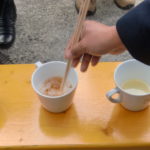
This involves checking a patient’s skin complexion, the colour and texture of his/her blood, nails, sputum, feces, and other general conditions. Special attention is paid to the condition of the patient’s tongue and urine.
2. Touch
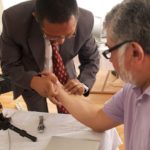 Pulse reading forms the most important method employed in Tibetan medicine. After ensuring an important set of preconditions, the physician proceeds with a pulse diagnosis. This involves placing the index finger, middle finger and ring finger of a doctor on patient’s radial arteries. The fingers must be held in a line close to one another yet not touching each other. The index finger must not put too much pressure on the skin; the middle and ring fingers should apply more pressure.
Pulse reading forms the most important method employed in Tibetan medicine. After ensuring an important set of preconditions, the physician proceeds with a pulse diagnosis. This involves placing the index finger, middle finger and ring finger of a doctor on patient’s radial arteries. The fingers must be held in a line close to one another yet not touching each other. The index finger must not put too much pressure on the skin; the middle and ring fingers should apply more pressure.
3. Interrogation
Interrogation forms the most important clinical aspect of the diagnosis. There are three main elements to a medical interrogation:
a. Determining the causative factors
b. Determining the site of the illness
c. Studying the signs and symptoms
The interrogation involves the doctor asking the patient about the dietary regulations she/he has been following, and what the physical and mental behavior she/he has been experiencing etc.
Treatments
Tibetan medicine considers diet, nutrition, behavior and life-style as essential elements of successful treatment. Apart from these methods, Tibetan medicine also applies many other therapies to secure positive results. These therapies may include Golden needle treatment, bloodletting, moxabustion, acupuncture, heat or cold external therapies, natural hot springs or medicinal baths, enemas, vomiting, purgatives, and massage. In addition, spiritual practice, five-element color therapy, and astrological configuration are treatment methods unique in Tibetan medicine.
Dietary and Lifestyle Factors
Improper diet and/or lifestyle primarily cause a disorder. In fact, a majority of health problems, both in developing and developed countries, can be either directly or indirectly attributed to poor diet or lifestyle. Examples of this include alcoholism, diabetes, hypertension and heart disease. The first form of treatment in Tibetan medicine is thus not medicines but changing a patient’s diet and lifestyle. Only if this fails to remedy an ailment is the use of medicines considered.
Tibetan Medicines
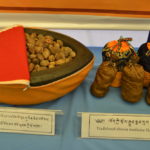 Tibetan medicines take various forms, decoctions, powders, general pills, precious pills, and syrups, and are prescribed in small doses — a fact that reflects the emphasis Tibetan medicine places on gentle treatment.
Tibetan medicines take various forms, decoctions, powders, general pills, precious pills, and syrups, and are prescribed in small doses — a fact that reflects the emphasis Tibetan medicine places on gentle treatment.
Moxibustion and Other treatments
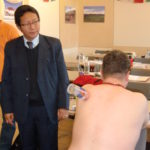 Many disorders, caused by proliferation of bad blood and mKhris-pa are also treated by bloodletting from one of the body’s major seventy-seven bloodletting points. For cold disorders, nerve malfunction and non-malignant tumors, moxibustion or golden-needle therapy may be used to stimulate the energy channels of the body. Many diseases of the nerves and muscles, as well as pain and insomnia related to rLung, are treated with gentle massage using various medicinal oils. Medicinal bath and natural spring bath are used to treat an assortment of skin disorders as well as chronic arthritis, gout and cold types of rheumatism, and rigid and stiffness of the extremities.
Many disorders, caused by proliferation of bad blood and mKhris-pa are also treated by bloodletting from one of the body’s major seventy-seven bloodletting points. For cold disorders, nerve malfunction and non-malignant tumors, moxibustion or golden-needle therapy may be used to stimulate the energy channels of the body. Many diseases of the nerves and muscles, as well as pain and insomnia related to rLung, are treated with gentle massage using various medicinal oils. Medicinal bath and natural spring bath are used to treat an assortment of skin disorders as well as chronic arthritis, gout and cold types of rheumatism, and rigid and stiffness of the extremities.
Mail Consultation
Drungtso Tibetan Medical and Astrological Centre provides also online consultation for patients who are not able to visit the centre and get examined in-person by Dr. Drungtso. To use this service, you are requested to furnish your name, address, telephone number, a detailed case history and your present complaints either in English or Tibetan.
Dr. Drungtso will personally review each case in detail and the prescribed herbal pills will be sent to you – after receipt of payment – through Registered Parcel or courier. One can also discuss with our resident doctor about specific cases over the phone through appointment. Regular responses are expected from the patients for a successful treatment.
Please use the Contact us page for send us the details for consultations.
